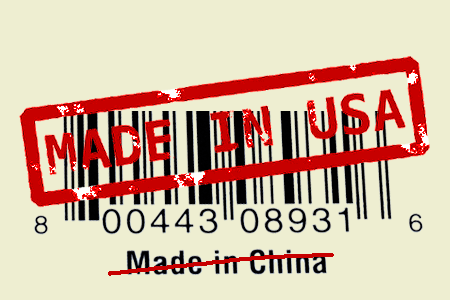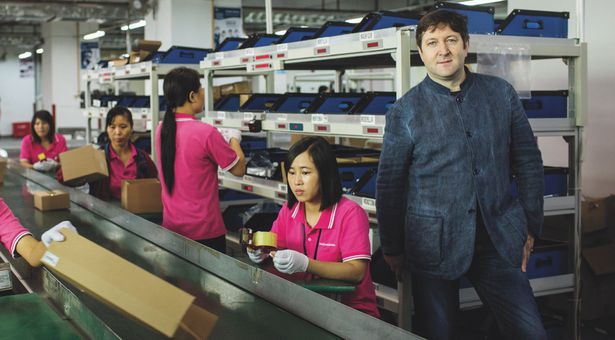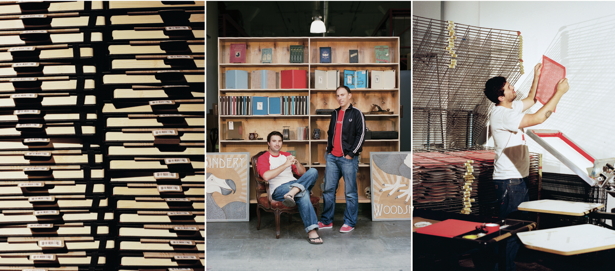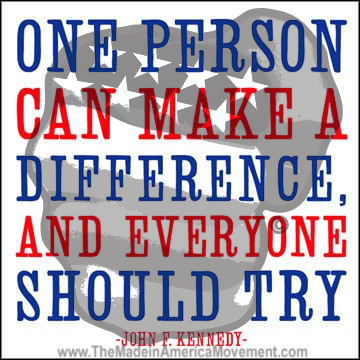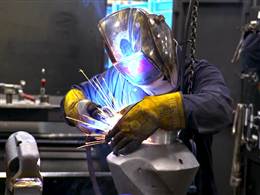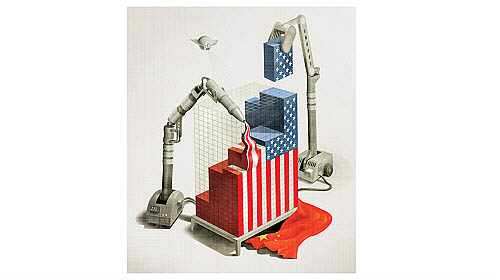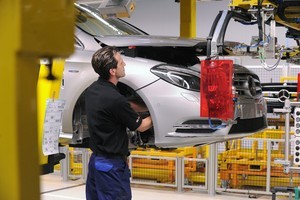
For decades, every trend in manufacturing favored the developing world and worked against the United States. But new tools that greatly speed up development from idea to finished product encourage start-up companies to locate here, not in Asia. Could global trade winds finally be blowing toward America again?
Near the end of this year’s second presidential debate, Candy Crowley of CNN pointed out that iPads, iPhones, and other globally sought-after Apple products are all made in China. What would it take, she asked both Mitt Romney and Barack Obama, to “convince a great American company to bring that manufacturing back here?”
I listened to this question with special interest, since I was following the debate, via hotel-room TV, from the Shenzhen manufacturing zone of southern China, where many of those same iPads and iPhones are made. For the few days before the debate, I’d been revisiting PCH International, an outsourcing company I’d first written about for this magazine in 2007, in “China Makes, the World Takes.” The company’s revenues have increased more than sevenfold since then and its workforce has grown almost as fast, despite the years of global recession. This is testament both to its own success and to the nonstop surge of outsourcing contracts to China.
The day after the debate, I walked through the famous Foxconn complex in the Longhua district of Shenzhen, where some 230,000 Chinese workers, mainly between the ages of 18 and 25, turn out products sold under international brand names, from Apple and Dell to Nintendo and Sony. Another Foxconn facility not far away employs another 200,000 people; throughout China the company’s workforce numbers 1.3 million. On previous attempts to get in over the years, I had never made it past Foxconn’s front gate—not surprising given the company’s policy of stiff-arming most foreign and domestic reporters. But a new PR team at Foxconn had apparently decided that closed-door secretiveness was making the company look even worse than it otherwise would. (If only this team were in charge of Chinese government policy—regarding the press, the Internet, letting people into and out of the country, and so much more.) Immediately after hearing the allusion to Chinese-made products on TV, I e-mailed an official at Foxconn and said that so prominent a mention in American politics would be a great news peg for a visit. I was fully expecting another turndown, but to my surprise, the company agreed. The next morning, I went to the factory and was told I could roam around and take pictures of anything I wanted, as long as I did not show or mention any of the brand-name products coming off its assembly lines.
What I saw at these Chinese sites was surprisingly different from what I’d seen on previous factory tours, reflecting the political, economic, technological, and especially social pressures that are roiling China now. In conjunction with significant changes in the American business and technological landscape that I recently saw in San Francisco, these changes portend better possibilities for American manufacturers and American job growth than at any other time since Rust Belt desolation and the hollowing-out of the American working class came to seem the grim inevitabilities of the globalized industrial age.
For the first time in memory, I’ve heard “product people” sound optimistic about hardware projects they want to launch and facilities they want to build not just in Asia but also in the United States. When I visited factories in the upper Midwest for magazine stories in the early 1980s, “manufacturing in America” was already becoming synonymous with “Rust Belt” and “sunset industry.” Ambitious, well-educated people who had a choice were already headed for cleaner, faster-growing possibilities—in consulting, finance, software, biotech, anything but things. At the start of the ’80s, about one American worker in five had a job in the manufacturing sector. Now it’s about one in 10.
“Many factory managers say openly that they prefer women: women, they say, learn new jobs faster, handle high-precision work better, and pose fewer disciplinary challenges.”
|
Whether you call the business history of the past 15 years the age of hedge funds, the age of Google (or its rival Facebook, or its other rival Amazon, or its other rival Apple), the age of Walmart, or even the cautionary age of Lehman Brothers and Countrywide, in no case would you call it the age of American manufacturing. Manufacturing’s share of the total American economy has fallen by about the same amount as its workforce share: it went from about 20 percent in the early 1980s to just over 10 percent now. For comparison, manufacturing accounts for some 30 percent of China’s total economy. Still, the U.S. economy is so much larger that our manufacturing sector, even in its battered condition, remains the largest in the world.
|
I’m used to hearing excitement from people at American infotech companies—or from biotech innovators, or people in other enterprises who believe the future is on their side. I’m used to hearing it in China. I’ve gravitated to tech topics and to fast-growing parts of the world because I like hearing from people with big plans and dreams. And this year, for the first time in decades, I have been hearing upbeat accounts from business officials and entrepreneurs engaged in American manufacturing.
The heart of their argument is this: Through most of post–World War II history, the forces of globalization have made it harder and harder to keep manufacturing jobs in the United States. But the latest wave of technological innovation, communications systems, and production tools may now make it easier—especially to bring new products to market faster than the competition by designing, refining, and making
them
in the United States. At just the same time, social and economic changes in China are making the outsourcing business ever costlier and trickier for all but the most experienced firms.
For Americans, the most important factor is the emergence of new tools that address an old problem. The old problem is the cost, delay, and inefficiency of converting an idea into a product. Say you have an idea for—anything. (For me, the list would start with silent leaf blowers, which I’d give to all my neighbors as gifts.) Before you can earn the first dollar from the first customer, you have to decide whether the product can be built, at what cost, and how fast, so you can beat anyone else with the same idea.
For the first time in memory, I’ve heard “product people” sound optimistic about hardware projects they want to launch and facilities they want to build not just in Asia but also in the United States.
|
The need to reduce costs has driven much of this work outside the United States. The possibility of saving time may bring some of it back. For instance, at Lime Lab, a small industrial-design firm in San Francisco, a design engineer named Adam Mack told me that technologies including 3‑D printing were revolutionizing the process of deciding what to build and where. Three-dimensional printing refers to computerized molding or related systems that can produce tangible objects in a matter of minutes or a few hours, on the basis of designs created on a screen. This dramatically speeds up the process of creating a prototype and then trying out variations and working out flaws.
|
“Before, you could sit around and talk about something you wanted to make,” Mack said. “Now you can have a prototype of an injection-molded part in your hand the next day, and confer with factory managers about how much it would cost to build.” By making manufacturing generally more attractive and feasible, new tools will—so I heard many times—lead to more good jobs in America than we would have thought possible only a few years ago.
“A revolution is coming to the creation of things, comparable to the Internet’s effect on the creation and dissemination of ideas,” Linus Chung told me at Lime Lab, in San Francisco. (Chris Anderson, formerly of
Wired, has recently advanced a similar case in his book
Makers.) Chung is an American-born, Stanford-trained manager who now works for PCH International and is based in Shenzhen. This past June, PCH bought Lime Lab as part of an expansion into America to encourage more start-ups and manufacturing work here. “There is a whole new interest in hardware in Silicon Valley,” said Phil Baker, a product-development expert who has worked with Apple and other companies since the 1970s. “I’ve never seen a more exciting time in the hardware business.”
Why “exciting”? Let’s consider the changes affecting China, and America, and manufacturers everywhere.
The Big Picture
For the past 30 years, all of the largest forces have pushed in favor of China’s manufacturing expansion, from very low labor costs and a deliberate policy of welcoming foreign investment, to ever faster and cheaper global cargo-shipment networks, to a deliberately undervalued Chinese currency. Within the past two years, nearly all of those advantages have become more complicated. (In his accompanying article for this issue, Charles Fishman explains some of the large forces pushing in favor of America’s manufacturing renewal.) In China, wages are rising, workers are becoming choosier, public resistance to environmental devastation is growing, and the Chinese “investment led” model is showing strain.
That model has involved a kind of hyper-Keynesianism far beyond what the United States experienced even during the most government-run periods of the New Deal. China has created jobs by building factories, highways, railroads, and dams—and airports where there are no cities, and cities where there are no people. “Americans are used to thinking of ‘savings’ and ‘investment’ as absolute goods, because we’ve done too little” of both, Michael Pettis, of the Guanghua School of Business in Beijing, told me. “But there is such a thing as too much savings and investment and infrastructure, and too little consumption, all of which we see in China.” If the American public challenge is “reinvestment” of all varieties—in education, in infrastructure, in a sense of community, in everything but houses—the Chinese counterpart is a need for a comprehensive rebalancing. Indeed, Pettis’s forthcoming book on the Chinese economy is called The Great Rebalancing. Reliance on exports needs to come into better balance with domestic consumption; economic growth with environmental sustainability; political liberties with the new level of economic prosperity; and on down a long list.
Some observers inside and outside China think that the strains are too great and the system too rigid to allow the necessary rebalancing in time for the party to maintain political control. For instance, Minxin Pei, a native of Shanghai who now teaches at Claremont McKenna College in California, has been warning for more than a decade that the economic, social, and political imbalances of the Chinese system would reach a breaking point just about now—and that Communist rule would have to give way to a multiparty system. Many others contend that, on the contrary, the Communist leaders will manage somehow to address each of today’s problems just before any one becomes an outright emergency, as they have done time and again for 30 years. Whichever view proves correct, the relevant point for Americans is a convergence of trends that make operations here more attractive and feasible, just as the cost and friction of operating in China are increasing.
The Factory-Level View, From the World’s Biggest Factory
I had a more vivid sense of some of these challenges after this latest look at Chinese factories—especially at Foxconn, the world’s largest electronics maker. You learn a lot about China from its factories, of which I have now visited nearly 200—just as you would have learned a lot about the England of Charles Dickens and Friedrich Engels by seeing its factories, and the America of Theodore Dreiser and Upton Sinclair. Factories are not the only arenas for high-speed social transformation in China: its farms, from which working-age people are fleeing, and its cities, to which millions of people migrate each year, are also the settings for individual dramas and collective adjustment at a rate and on a scale that the world has never previously seen. But on this trip I spent time in factories. And what I saw underscored the ways in which the tumultuous transformation of China is complicating life for its outsourcers and exporters.
At the Foxconn plant I visited, I know firsthand only about conditions I could observe in four hours of walking around the more than one-mile-square “campus” and being taken into selected dormitories, cafeterias, training rooms, and assembly-line areas by members of the newly accommodating Foxconn PR team. One part of the visit had the unmistakable note of the staged: In the sole dormitory we entered, whose occupants were all on their shifts at work, every towel and pillow in the four-bunk room I saw was perfectly aligned. The clothes were on hangers in precise order, and there was not a scrap of extra paper or debris on desks, dressers, the floor, or anywhere else. I could only assume that this room had been specially cleaned up; other parts of the campus resembled most other parts of China in being much more casually
groomed. I’m acutely aware of all the things I did not see: conditions at night, the dorms where not four but six or eight workers live in each room, assembly lines where hazardous materials might be used or where the pace is exceptionally fast. Still, what I was allowed to see was more than a tiny keyhole glimpse—and my movement around the campus was less rather than more controlled than I’d been accustomed to on other factory visits. The scale of buzz and activity was so vast—cafeterias with thousands of people getting lunch, bus and shuttle stops with hundreds of workers waiting for a ride, coffee shops and convenience stores crowded with Foxconn patrons—that I doubted that every detail could have been orchestrated overnight. Plus, there were products to ship.
At most other big Chinese factories I’d seen, people walked around all day in uniforms—usually gray or blue coveralls for men, light-colored smocks for women. At Foxconn, people wore anti-static jackets and caps when at work on the assembly lines and shirts or vests with the Foxconn logo when in offices. But when walking to the cafeteria, going to the shops, or commuting to normal off-site apartments, where three-quarters of the workforce lives, people were dressed in the blue jeans or cargo shorts and fake Polo or NBA shirts of a normal Chinese crowd. On the lines I did see, where printed circuit boards and other electronic components were being put together in a process that combined the use of large, fancy, expensive machinery with detailed handwork, the pace and supervision seemed no looser or tighter than I’d seen at comparable sites elsewhere in China. If you are looking for the most-gruesome factory conditions in China, you don’t go to a multinational giant like Foxconn, which has to deal with Western customers and pay at least some attention to appearances and laws. You go instead to the small, ramshackle, often unregulated workshops, often away from the big cities, where conditions are as inefficient and sometimes as unsafe as they were when China was just beginning to industrialize.
Although I had heard about the Foxconn “suicide nets,” I was still taken aback to see them. Most dormitories and factory buildings on the site are five or six stories tall. Outside every upper-story window, open balcony, and other spot from which someone might plunge, the company has installed netting about 20 feet above ground level. The founder and CEO, Terry Gou, ordered the nets installed after a spate of jumping suicides in 2010; many of the upper windows also now have latches that keep them from opening fully, and some balconies have a fine mesh of jump-prevention wire. The idea, I was told by a Foxconn spokesman, was that while some suicide attempts reflect deep mental illness or depression, others are impulsive and half-thought-through, so anything that even slightly slows an attempt might deter a suicide altogether. (The peak suicide rate for Foxconn came in 2010, when it reported a total of 12 “completed” suicides at all its Chinese plants. On a per capita basis, this was below the suicide rate for China as a whole, but everyone at Foxconn recognized it as an emergency.)
But to me the most significant aspect of the visit—one my hosts were so inured to that they barely mentioned it—was the sight of the enormous throngs at Foxconn’s recruiting and new-worker training sites on campus. In a typical week, the Shenzhen Longhua facility will take on about 2,000 new employees for its own factories, and recruit and train many more for other Foxconn sites. It brings in so many people because so many keep heading out; the annual turnover rate at the plant is about 60 percent—high but not astounding by Chinese standards.
A convergence of trends make operations in America more attractive and feasible, just as the cost and friction of operating in China are increasing.
|
You can draw many conclusions from this rate of churn. Anita Chan, an expert on Chinese labor conditions at the University of Technology, Sydney, said the turnover indicated some brutal realities of Chinese factory life, in ways that reflected both well and poorly on Foxconn itself. “Why do workers still go to Foxconn despite its bad reputation?” she asked, in an interview with The China Story, an Australian online journal. “I believe that it is because they know that Foxconn pays wages on time. While this may appear to be a crude view, workers at Foxconn often come from smaller companies where they have been cheated, are underpaid, or even owed wages. In this context, they know that Foxconn is synonymous with an assured income.”
|
But to earn more money—or even enough money to stay ahead of fast-rising food and housing costs—the workers find that they have to put in overtime. According to Chan, “They willingly comply until they get totally exhausted and cannot tolerate the long work hours anymore. Their solution then is to quit.” Some go back to Foxconn; some go, often with a group of friends, to another factory in hopes of a better deal; some find retail jobs; some move back home or to other parts of the country. All in all, they change the labor dynamics of China’s vast factory zone, steadily increasing the cost and reducing the predictability of doing business there.
I spoke about workforce churn with Foxconn’s Louis Woo, whom I had met years earlier in Shanghai. Woo and Terry Gou had become friends in the early 1990s, when Woo was the general manager of Apple Taiwan. Four years ago, Woo accepted Gou’s offer to be Foxconn’s chief spokesman, and moved to Shenzhen. Woo told me that Gou, who turned 62 on the day of my visit, was at this stage of life increasingly conscious of the social as well as the purely industrial legacy of his work.
Terry Gou has done as much as anyone since Deng Xiaoping to shape life in China, or at least in the factory-dense southern part of the country. Although Gou is Taiwanese and Foxconn’s headquarters are in Taiwan, the company is the largest private employer in mainland China. According to Louis Woo, Gou is aware of the example of Henry Ford. Not the Ford of the assembly line and the mass-marketed Model T, whose achievements Gou has already matched, nor the elderly Henry Ford of the anti-Semitic conspiracy theories. Rather, the “welfare capitalist” Ford, who in 1914 announced a new $5 daily wage, roughly double the prevailing rate. Ford did this to reduce then-extreme turnover on his assembly lines, which was even more rapid than Foxconn’s current level, and to hasten the creation of a middle class capable of buying his cars.
Foxconn has raised basic wages four times in the past three years, in some areas doubling the starting-level pay. A typical Foxconn assembly-line worker spends 50 hours a week on the job—40 hours at base rates, and 10 hours of overtime at a time-and-a-half rate. For that, a worker typically gets about $400 a month, or about $2 an hour. During production surges, workers may put in another 10 hours of weekend overtime, for which they get double-rate pay. Six years ago, typical monthly pay in Shenzhen factories I visited ranged from $115 to $155 (the difference partly reflects the higher value of the Chinese renminbi today). Woo said that he expected the trend of rising wages to continue, and that Gou was mindful of the centennial of Henry Ford’s $5‑wage announcement, in 2014. This would reflect a calculation of long-term self-interest comparable to Ford’s: if Gou can accelerate the growth of China’s middle class, a large company like his will share in the returns. “If we have a new-generation middle class, that will fuel the need for products like those we manufacture,” Woo said.
A living wage for the laboring class would be one
more sign of progress for China, as it was for the America of Ford’s era. But it would also be part of the process that is reducing China’s advantage as a site of cheap labor—and a sign of other challenges facing Chinese employers.
Two more things about the Foxconn workers surprised me: that so many were male, and that nearly all were kids. By kids I don’t mean the 14-year-old “apprentices” a different Foxconn plant, in the northern city of Yantai, was found to have hired earlier this year. (The company apologized to the youths and their families and, according to Woo, fired one of the managers involved and disciplined a total of nine.) I mean that at factories I’d previously seen across China, the workers looked and acted like country people weathered by their rough upbringing. Most of the Foxconn employees looked like they could have come from a junior college.
“Even a few years ago, the typical worker was a farmer,” Louis Woo told me. “He or she already had a family back in the village. They came, they earned their money, and when they were able to buy some pigs or fix up their house, they went home.” The standard workers today, he said, are those people’s children. “They’ve never farmed. They don’t want to, and they don’t have to, thanks to the hard work of their parents, who were the first generation of migrant workers. They’re coming here as part of entering a bigger world.” Chinese factory bosses face the same challenge in dealing with them that Chinese political bosses face with a better-informed, more intellectually independent populace. The “shut up and look at your paycheck” approach that has worked for people who remember China’s backwardness may not work for their children.
Promising new tools are making it possible for American innovators to rapidly convert their ideas into products—and jobs.
|
I noted a parallel change at some PCH factories. On my previous visit, four years earlier, virtually all of the assembly-line workers had been female. This time, all but one of the PCH factories I visited was staffed predominantly by young men. I asked the supervisor of the one all-female line why there were no men on it. “These are the more responsible jobs,” she said. (The women were handling online orders from American customers for a famous electronics brand.) She was partly joking, but many factory managers say openly that they prefer women for any job not requiring unusual strength.
|
The prevailing view is that women learn new jobs faster, handle high-precision work better, and pose fewer disciplinary challenges. (I am just telling you what they say.) But as the modernizing Chinese economy creates more options for women, fewer of them are choosing factory work. That leaves men.
Among the consequences is greater fractiousness in the typical Chinese factory force. In September, a Foxconn plant in Shanxi province was temporarily closed because of a late-night riot that eventually involved several thousand workers. According to Louis Woo, the riot was touched off not by worker-management tensions but by the Chinese equivalent of an ethnic-gang war in an American prison, as workers from one province took the side of a colleague who was fighting a worker from somewhere else. This is the sort of thing that happens more frequently with more men in the workforce.
Ten years ago, Chinese factory life stood comparison to the “dark Satanic Mills” of William Blake’s England in the early 1800s. Five years ago, I was struck by the parallels with accounts of Chicago packinghouse life in the 1890s. Now I see a counterpart to the American 1920s, with the first sizable generation of
moderne post-rural life. In September, after turnover surged at many Chinese factories, PCH commissioned a nongovernmental organization to do a survey of worker attitudes. I sat in on a focus group from the factory discussing the findings. It’s not the long hours we mind, most of the workers said; according to the survey, fully 80 percent welcomed an average of two or three hours of overtime a day, because of the extra pay that meant. But we still want to “have a life,” they told the survey takers. The No. 1 item on their wish list was more organized social activities on the weekends, and singles nights and mixers for all the unaccompanied young men.
China’s economic and social maturing, tumultuous or smooth as it may turn out to be, will certainly affect the world division of labor. Some very low-skill jobs may move to very low-wage economies, such as Burma, India, and parts of Africa; some will move to inland China; some will be automated or done by robots; some will stay in China, but at higher costs. But some of the next round of jobs that might have moved to China will be more attractive for producers to keep in the United States.
The New Smiley Curve
Above: Woodworking and bookbinding equipment at the San Francisco factory of DODOcase, with founders Patrick Buckley and Craig Dalton pictured in the middle (David Høgsholt)
“Geography is history,” I was told in Shenzhen by Liam Casey, the Irish-born entrepreneur, now in his mid-40s, who founded PCH 16 years ago. (The name is a sentimental allusion to the Pacific Coast Highway in Southern California, where Casey had been living until his failure to get a green card forced him to leave. I’ll say it in every article: America’s greatest strategic advantage is its openness to an outsize share of the world’s talent, and one of its greatest self-inflicted weaknesses is needlessly turning that talent away.) Casey—whose company is headquartered in Ireland and employs some 4,000 people, mainly in China, and this year will handle electronic goods with a retail value of some $8 billion—still lives in the Sheraton Four Points Hotel in Shenzhen, as he did when I met him in 2006. Everywhere he goes, he takes three iPhones with him—one on a Chinese network, one Irish, one American—and I’ve seen him use all three at once. I am several inches taller than him, but I practically needed to run to keep up with his superfast walking pace. I took this as his way of reminding himself and everyone around him that modern business is all about speed.
Here is what Casey meant by “geography is history,” and how it affects the prospects for U.S. manufacturing:
“For decades, the process of technology-enhanced globalization has been pushing manufacturing work steadily from richer countries to poorer ones. Casey has had a firsthand view of this transition. As he explained to me when I first met him, “supply chain” interactions like those between Apple and Foxconn, or other famous Western brand names and the tiny Chinese firms Casey lined up as subcontractors, brought benefits to all sides, but in a very particular way. Customers in rich countries got the benefit of cheaper products—an iPhone for $300, for instance, rather than $2,000 if it had been made at U.S. wages. Factory workers in China and elsewhere got their pay.”
But the companies involved benefited very unevenly, according to what Casey has named the “smiley curve.” This idea has become so familiar in China that the government alludes to it in the current Five Year Plan. For anyone not familiar with it, the concept refers to the sequential stages in manufacturing a product, arrayed from left to right along a U‑shaped smile. They start on the left with the corporate brand (for instance, Apple), then the product i
dea
(iPhone), then the industrial design, and on through the stages of manufacturing at the bottom of the curve—then shipment, retail, and service going up the other side. The profitability of each stage matches its elevation on the curve—which is why Chinese manufacturers, down at the bottom of the curve, get the smallest share. Globalization has thus far enriched Westerners on the high parts of the smiley curve—designers, shareholders, advertisers, other mainly white-collar professions—but has left out Western manufacturing workers.
A crucial and underappreciated step in this process, Casey and others explain, is the transition from the idea for a product to its physical incarnation, which can then be made and sold. There’s a direct analogy to the world of publishing. Even 10 years ago, having an idea for a book, a song, a political exposé or commentary, got you only so far. To spread your work or ideas beyond your immediate circle of friends required the involvement of a publishing organization. Unless you could persuade an editor, a broadcaster, or a publishing house to promulgate your views, few people would ever hear them. Writing was hard enough; “getting published” could be worse. But now, blogging software and social media of all sorts have eliminated that barrier. Publishing organizations can still provide authority and a megaphone. But more ideas from more people are now being heard by more people.
How does this apply to manufacturing? Blogging software and related technologies have made it easier for entrepreneurs in the realm of ideas to expose their products to a worldwide market test. Three-dimensional printing and related technologies are making it easier for entrepreneurs interested in making physical goods to expose their products to the worldwide market. America has more than its fair share of such potential innovators, thanks to immigration, our still-strong university and public research centers, and the financial and cultural underpinning of a start-up culture. The terrain is shifting in a way that should draw more entrepreneurs to manufacturing and let more of their ideas succeed. This should in turn foster more manufacturing work within the United States than was feasible a few years ago. Companies with the right connections to foreign suppliers and foreign markets will grow even faster.
But rather than simply shifting manufacturing work from rich countries to poorer ones, this latest technological wave should allow all regions to grow. “As business has become faster and more globally connected, that’s been good for American companies overall but bad for America’s low-skilled manufacturers,” Phil Baker, the designer for Apple and other companies, told me. “Now speed and connections allow start-ups to compete with much larger companies, and often beat them.”
Made in San Francisco“I am betting heavily on San Francisco, for its energy and creativity,” Liam Casey told me in China. He didn’t quote Jane Jacobs, but he went on to present a theory that could have come from her book The Death and Life of Great American Cities: national economies are really a collection of vibrant city economies, and cities thrive when they foster a diverse ecosystem of small enterprises whose growth is mutually reinforcing. He felt that his adopted home of Shenzhen was the engine and the success model for China. “When I came here, Shenzhen was a place to make cheap products,” he said. “Then it became a place to make products cheaply. Now, for the work we do, it’s the only place to make certain products, because of the supply base, the logistics, and the workforce.” (He said that my article about his company, “China Makes, the World Takes,” could, five years later, be redone as “Shenzhen Makes, China Takes.”) San Francisco is his model for how the new manufacturing economy would spread in America. When we spoke, he had just leased a 30,000-square-foot building off I‑280, the former home of the San Francisco Bay Guardian, and announced plans to establish major PCH operations there. “We look forward to fostering the growing community of makers in the Bay Area who seek to have a massive impact on the world through their dedication to design, brand building, and consumer experiences,” he said in a statement announcing the deal.
To put his ambitions in context, let’s consider an existing effort to boost the “community of makers” in San Francisco, a coalition called SFMade. I use it as an example of undertakings on behalf of small manufacturing in several North American cities. This example is different from Casey’s plans in its scale and its level of technology. But it is similar in its emphasis on speed as the key to manufacturing success, and its ambition to help large enterprises grow from small start-up roots.
The Bay Area might seem to display all of America’s imbalances, intensified. Tech and venture-capital billionaires on the Peninsula, hipsters in the East Bay and the city, rich naturalists in Marin, and ordinary families priced out of anything not a distant commute away. Of course, this is a caricature, but it is one that matches the prevailing rest-of-the-world view of a hollowed-out and unequal modern United States.
Into the standard American urban mix—high-end tech and finance, low-end service or tourist work, the professional class from universities and hospital complexes—has come an unlikely renaissance of small-scale manufacturing in the past five years. There is no point in comparing it with anything in China. The 400 manufacturing firms that have factories in San Francisco and are part of the SFMade coalition employ a total of just over 3,000 people, equivalent to a busy week’s intake at Foxconn’s Longhua campus. Apart from the 100-employee LeeMAH electronics firm, founded by an immigrant from China, their products are mainly medium- and low-tech: apparel, high-end food and drink, bags and accessories. This pattern will be familiar to anyone who has followed the growth of light manufacturing in Brooklyn. In San Francisco, more than 120 of the firms were founded during the past three years of overall economic distress; their employment base grew by 10.5 percent last year and 12.5 percent this year; and they have applied in their modest way the principle of drawing on a local base of skilled workers for very fast response to global consumer demand.
“Most of the companies that are here would argue that, while they are not super-duper high-tech, they are all absolutely connected to the design prowess and skilled craftworks in the city,” Kate Sofis, the executive director of SFMade, told me. The most obvious example is apparel. Like New York, Chicago, Cleveland, and Los Angeles in their periods of fastest manufacturing expansion, San Francisco has attracted a large and diverse immigrant population. “The Latino and Asian communities have a high level of apparel skills,” Sofis said. “A young designer might have high design skills but not the technical ability to realize it.” Going to Asia for production would be too slow; finding the skills elsewhere in the U.S. would be too hard. Carrying out all operations locally has allowed many SFMade companies to offer quick “mass customization”: Rather than buying off the rack, a customer can choose personalized clothing, accessories, furnishings, or furniture, mainly online. Then small factories produce the goods locally, faster than they could come from overseas. I spoke with Sofis just before she headed to a conference of the Urban Manufacturing Alliance, which promotes manufacturing in 15 other cites, from Boston and New York to Detroit and Atlanta.
I first learned of SFMade two years ago, via DODOcase, a member that is one of the city’s start-up success stories. I had bought one of the company’s iPad covers as soon as it came onto the market, because I was drawn to its distinctive retro-futuristic design. Inside, the case contains an iPad or other electronic reader. Outside, it looks like an ant
ique leather-bound book. A bamboo frame holds the electronic tablet in place and also strangely recalls the look of the page edges of a physical book.
“Back in 2010, we saw an opportunity present itself, if we could move quickly enough,” Craig Dalton, a veteran of tech start-ups who is now in his early 40s, told me in explaining the company’s history. I liked that he said “back in 2010” so matter-of-factly. The opportunity that 2010 brought was the launch of the first iPad. Liam Casey got his start making accessories for the popular electronic devices of 15 years ago. Dalton and his business partner, Patrick Buckley, did not know Casey’s story, but they saw a parallel chance.
To “design the product, and launch, and fulfill orders within one month—that meant that outsourcing to China was not ever a feasible option,” says Craig Dalton, a veteran of tech start-ups.
|
“The Kindle and other e-readers were already getting noticed,” Dalton told me. “The writing was on the wall, you could say, that there was going to be this shift from ink and paper to electronics as the way people consumed information. We felt there was an opportunity to connect people to the physical experience of picking up a book, and to the soon-to-be-dying craft of bookbinding.” Buckley, who is in his early 30s, had trained as a mechanical engineer at MIT and worked in laser physics at Lawrence Livermore National Laboratory, and had grown up with several relatives who worked in New York’s publishing industry.
|
He and Dalton felt they had to act fast, he told me, to get their product noticed in a field that was sure to fill up quickly. “We knew it was a very small window, and we needed to have a finished product quickly,” he said. “To figure out all the things we needed to do, and design the product, and launch, and fulfill orders within
one month—that meant that outsourcing to China was not ever a feasible option.”
When he asked friends at Levi’s, Buckley said, they told him that nine months would be a reasonable timeline to take a product from concept to delivery. “We had to do it in a couple of weeks. Nimbleness like this would be impossible with a longer supply chain.” The partners drew on local woodworking and bookbinding talent. “The resources are still here, much atrophied, but in pockets,” Buckley said. San Francisco has a long tradition of fine printing. Dalton and Buckley bought large, heavy bindery machines from printing houses and brought them into their factory.
DODOcase is a niche success, to be sure. But it has grown to 30-plus employees in two years, with 30 percent of its sales outside the United States, and its founders have broad ambitions. “If you look at brands like Levi’s and Gap and North Face that had their beginnings here in S.F., you see that a small boutique idea can grow into a global brand,” Buckley said. “It is very hard to tell ahead of time which ones will make it, but we hope to become a lifestyle brand with the recognition and scale of a Gap.”
I have learned to imagine the possibility of rapid growth. I first interviewed the founders of Google when the company had 20 employees, versus today’s 30,000, and visited Apple three years after its founding, when it had a few hundred employees rather than today’s 60,000. Big things start small.
Mr. China Comes to America
The medium-tech start-ups of SFMade (and its counterparts) are working out a strategy that combines quick response, local skills, and a global marketplace to foster manufacturing in U.S. cities. Liam Casey’s new investments in the Bay Area are designed to apply a similar model for companies several steps up the technology ladder. The purchase of Lime Lab and the opening of what he sees as an academy of high-speed manufacturing in the city could combine to bring to U.S.-based entrepreneurs, inventors, designers, and smaller companies some of the advantages now unique to Apple and a handful of other globally integrated firms—and with a greater probability than Apple’s of creating jobs in the United States.
The heart of those advantages is, again, connecting the sequential stages of the manufacturing cycle as a whole. The process naturally starts with the idea for a product. Whether the idea is practical depends crucially on how it is realized in industrial design; whether that design makes for an efficient or impractical factory experience depends on how well it is matched to process-engineering on the shop floor. Even after production begins, the design is often refined and the manufacturing process rejiggered based on real-world experience.
The closer this linkage, the faster and more efficiently an idea can be converted to tangible, marketable reality. The more evolved and responsive the feedback loop, the more precisely an organization will be able to distinguish promising projects from impractical ones. Apple has this capacity; it has teams on more or less permanent assignment to southern China to match its designers’ goals to the realities of the shop floor. But for the first time in decades, new tools are making it possible to develop this capacity for U.S. manufacturing. This means greater prospects for American innovators to convert their ideas into products—and jobs. That is what’s new, and promising. As one entrepreneur told me, asking not to be named for fear of irritating the mighty Apple, “What Apple has, internally, will now be available to smaller companies.”
In specific terms, the service that Lime Lab and a growing number of design firms can offer is a “quick iteration” way of deciding which ideas will be most practical for manufacturing. “Over the past couple of years, people have gotten used to the idea of rapid iteration in social-media firms,” Linus Chung told me. “You iterate and adapt quickly based on consumer demand. You learn to ‘fail fast.’ We’re bringing that to the hardware space.” As an illustration, he mentioned a start-up called Lark, which makes electronic sleep- and fitness-monitoring devices that are part of the broader trend toward precise, individualized indicators of health that Mark Bowden discussed recently in “The Measured Man” (July/August 2012). Lark was founded two years ago, while the overall economy was still reeling, by a Stanford-trained entrepreneur named Julia Hu. Many of its products, the latest of which is a $149.99 wristband that monitors your sleep, exercise, calorie-burning, and even degree of hydration, are now carried at Apple stores and by Best Buy and Brookstone. The electronics in this wristband are assembled in China, as are nearly all of the world’s electronics. But more of the total job growth in the company’s rise, including engineering and design work, has been in the United States than would have been the case even way back in 2009. “They started with five people, and now they have 30,” Chung, who has worked with Lark, told me. “For a company their size, you’d expect they’d need half those people in China. Now that entire team is one office in the United States.”
Fifteen additional employees here, a new urban start-up there—these are obviously not the sole answers to America’s reindustrialization. The growth of this sort of activity depends on large-scale policies: continued national investment in high technology; education to train the next generation of engineers and craftsmen; negotiations to open up markets (and protect intellectual property) around the world. The politically controversial, but right, decision to keep General Motors operating saved hundreds of thousands of manufacturing jobs from being needlessly lost.
But developments like these are an important part of the solution. Any account of a region’s growth or decline at any stage of our economic history has indicated promise when the region is full of people optimistically starting small ventures, and decline when it is not. “The real key to long-term value creation is that ongoing string of new companies,” Liam Casey told me this year, in New York, after he had met with people considering start-ups there. “That’s where you create the next wave of value, and new jobs.” American culture has long been favorable to the start-up, and the United States has captured a disproportionate share of the profits from their innovations. Shifts in technology may soon allow us to capture more of the jobs.

